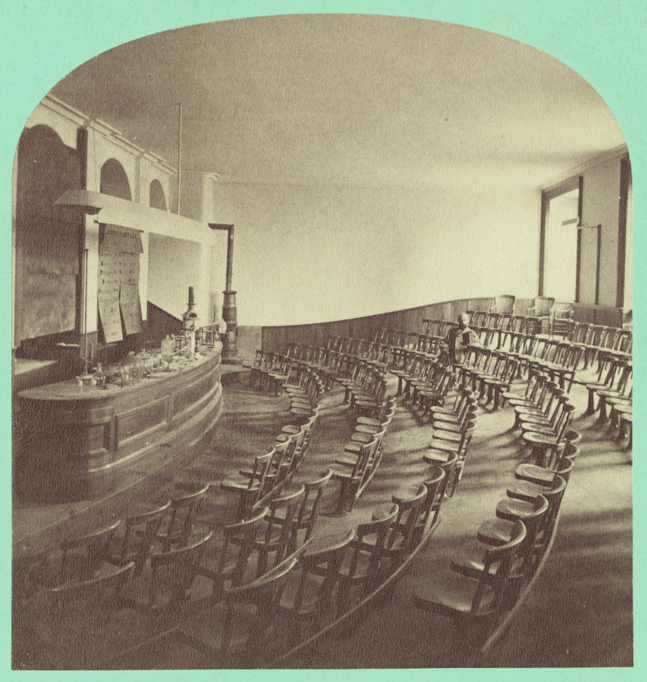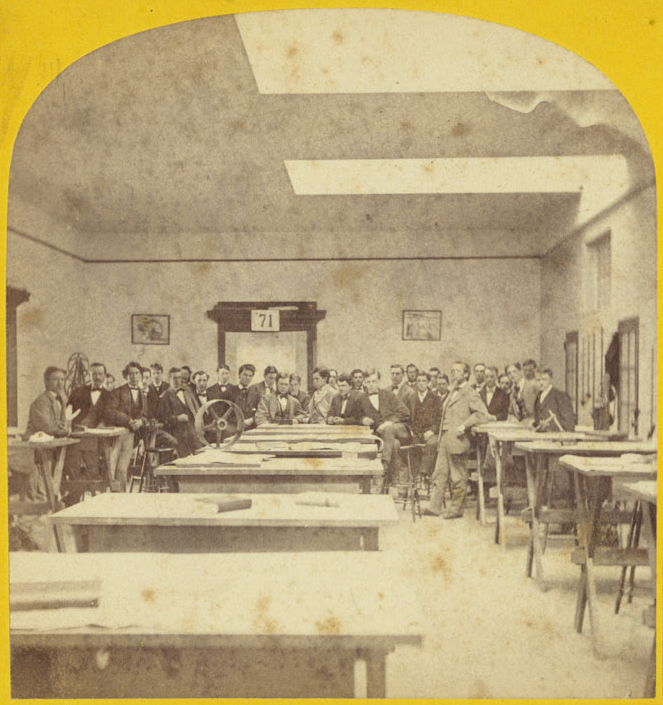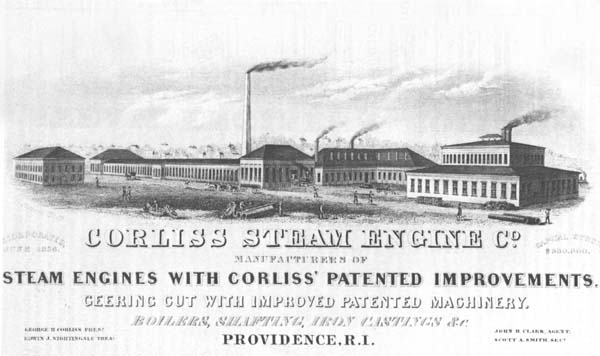April 13, 2020
Nathanael Herreshoff, Steam Engineer: The MIT Years (Part I)
What was it like to be a student at MIT in the 1860s? A guest post by a friend of HMM
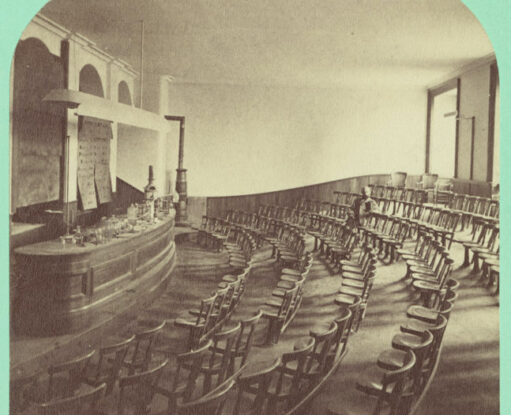
by Jim Giblin
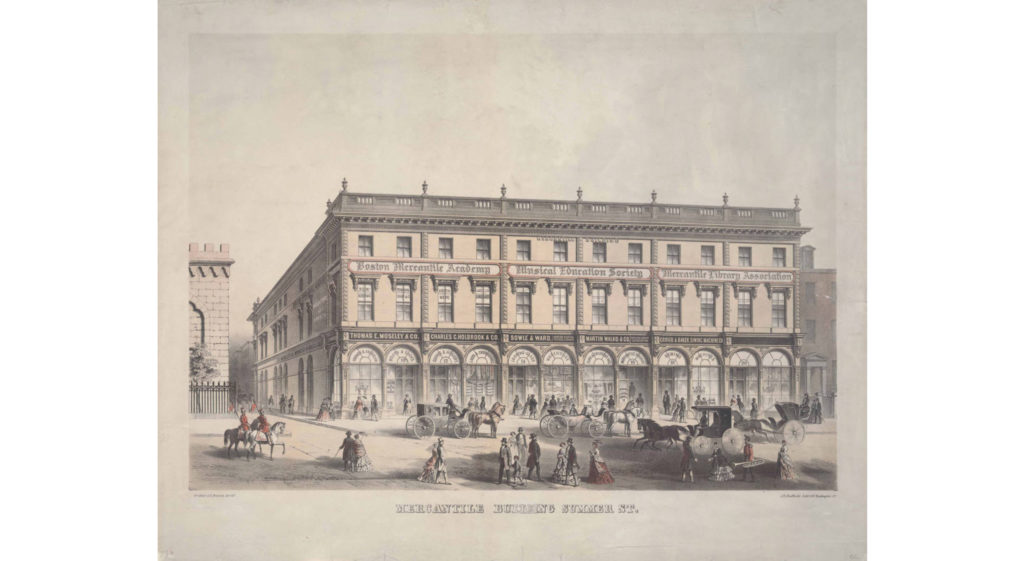
Nathanael Herreshoff began classes at the Massachusetts Institute of Technology on October 4, 1866, after graduating from Bristol High School in June of 1865. He enrolled as a “special student” for a three-year course in mechanical engineering at 18 years old. 1866 was only the second full MIT academic year and classes that fall were the first to be held in the school’s new building located on Boylston St. between Clarendon and Berkeley Streets in Boston's Back Bay. There were 27 “specials” and 64 regular four year degree candidates admitted to “Tech” that fall. In the early days of MIT the specials made up about thirty to forty percent of the MIT student body.
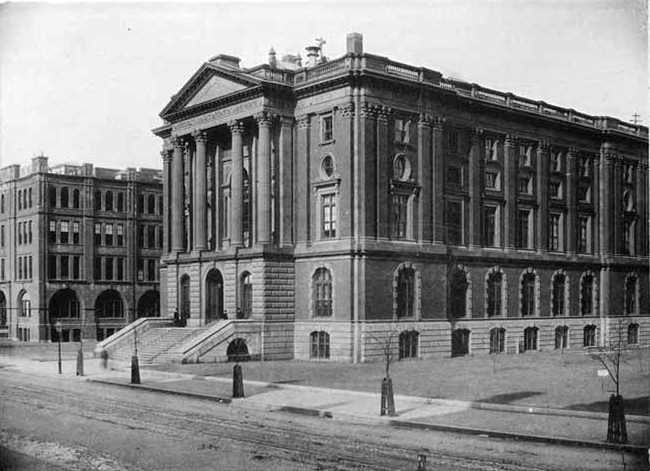
The course catalogs for the years Nathanael attended MIT clearly state the mechanical engineering curriculum requirements for regular students. Contrastingly, the “specials” were given flexibility to select their courses provided they demonstrated mastery of the prerequisite knowledge. Though we don’t know for certain, is possible that Nathanael was able to pass over some of the language requirements of the regular student curriculum to concentrate on the technical courses. This might explain why he was able to take many of the fourth-year mechanical engineering courses in his third year. Nathanael did not study either Marine Engineering or Naval Architecture, as MIT would not offer courses in those subjects for at least another 20 years; the first courses in Marine Engineering weren’t offered until 1886, and the first lectures in Naval Architecture until 1889.

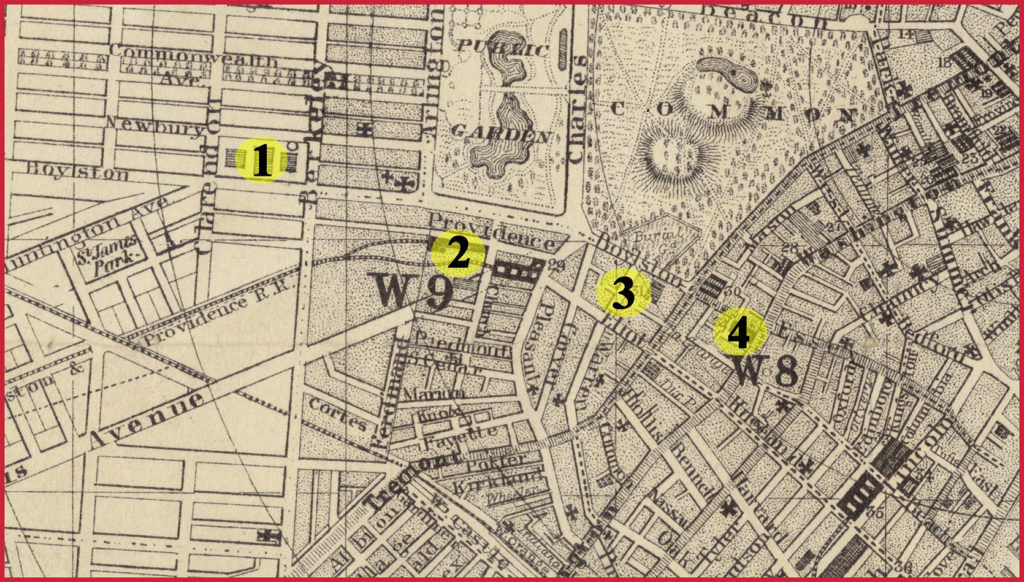
For the academic year 1866-67 the attendance fee for regular students was $100 for the first year, $125 for the second year, and third and fourth years were $150. The fees for special students were flexible depending on the length and number of courses chosen.[1] During his first and second years at MIT Nathanael roomed at 4 Boylston Place, a 10-minute walk to classes. During his last year he roomed at 20 Boylston St., a slightly longer 15-minute walk. Both locations were only a short walk to the railroad connections for Providence and on to Bristol.
The MIT academic year began on the first Monday of October and ended on the Saturday preceding the first Monday in June. There were no classes on legal holidays, but no other scheduled breaks. Weekday classes of one-hour duration were held from 9:00 am to 1:00 pm and following the mid-day meal from 3:00 pm to 5:00 pm. Afternoon laboratory classes were normally two hours in length. Saturday classes were held from 9:00 am to 11:00 am. As a land grant college, MIT was required to provide some form of military training, which was conducted on Saturdays from 11:00 am until noon. All regular students were expected to participate in the military training but it is unclear whether special students were exempt; they may have been. During Nathanael's time at MIT, military training was generally judged to be ineffective and a waste of time by the students.
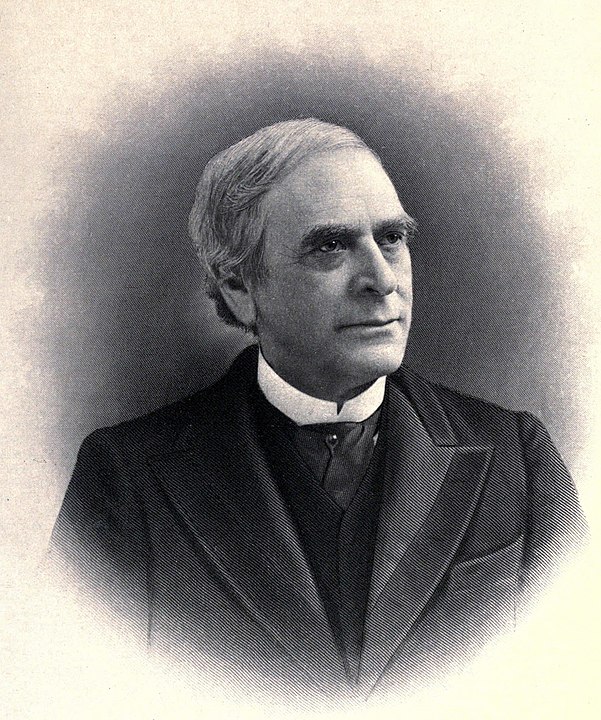
MIT required students to visit industries and shops within convenient reach of the school to provide an immediate connection between what they learned in school and what they observed in the industrial establishments associated with the professions for which they were preparing. The Corliss Steam Engine Company in Providence is listed in the course catalog as one of those companies visited. It is possible George Corliss met Nathanael on such a visit, or through some other MIT connection.
Nathanael completed his studies at MIT the fifth of June 1869. He received a Certificate of Attainment rather than a diploma; these certificates were awarded to special students following examinations demonstrating their proficiency in their field of study. Nathanael went on to work at Corliss the following fall, after taking a break to race his brother’s sloop SADIE extensively during the summer of 1869.

Jim Giblin is a retired mechanical engineer, independent researcher, and long-time friend and supporter of the Museum. He is based in Noank, CT.
[1] For comparison: a boatbuilder in MA made an average of $3.65 per day in 1860, or about $1,140 a year assuming a six-day work week. Though NGH was not yet listed as a working professional, his brother John is listed as a boatbuilder in the 1865 Rhode Island Census. Data taken from the Annual Report on the Statistics of Labor by the Massachusetts. Dept. of Labor and Industries. Division of Statistics, published 1885, accessed 04/09/2020 via googlebooks and the 1865 Rhode Island Census

